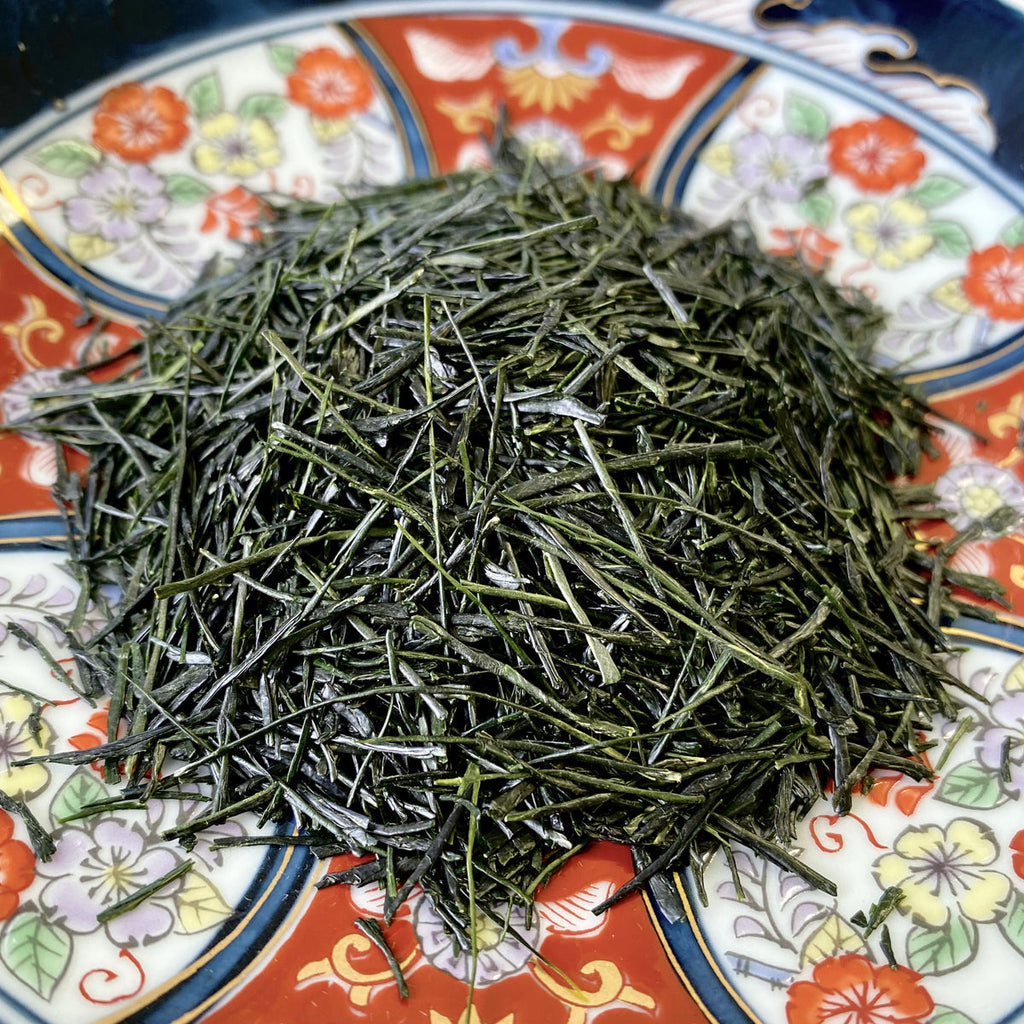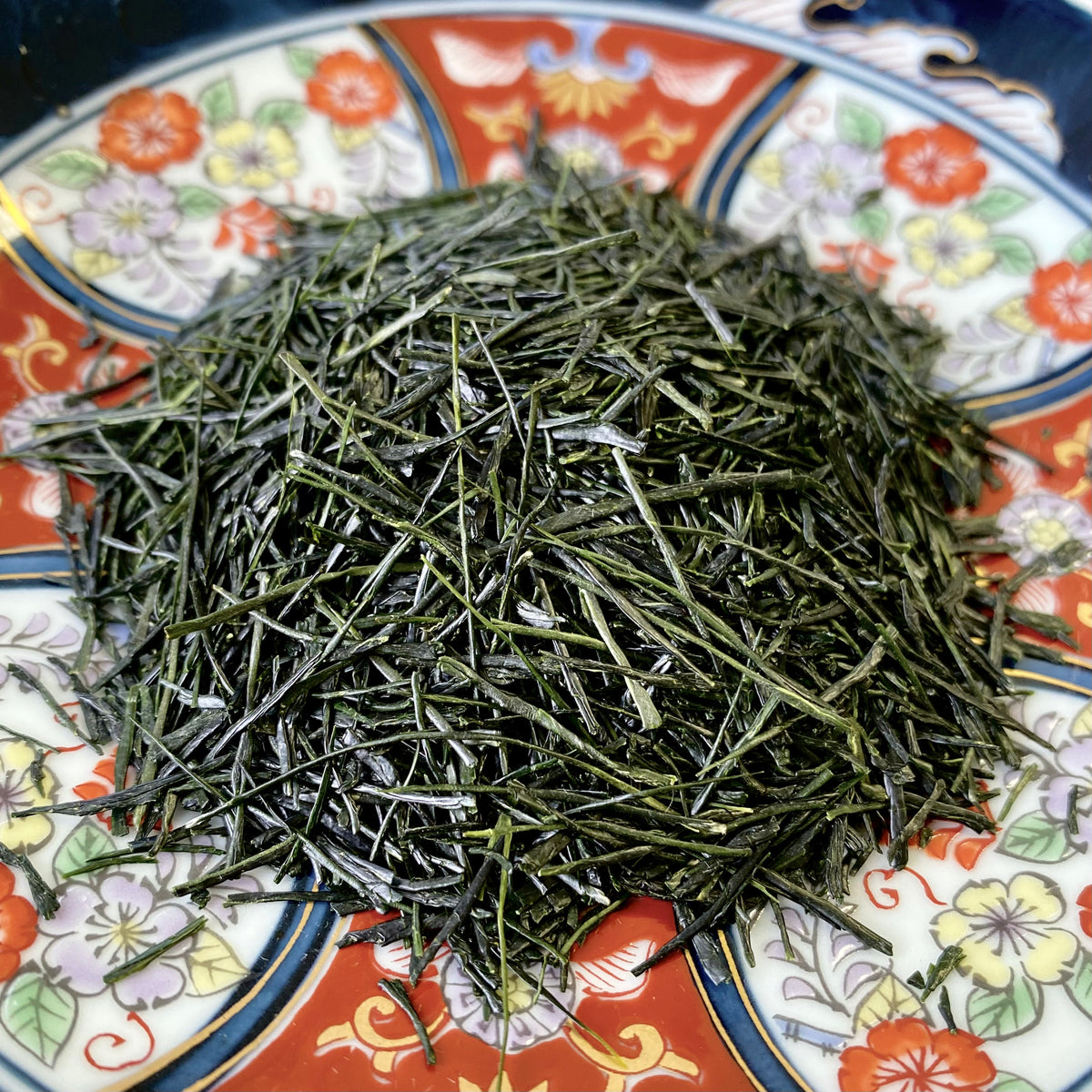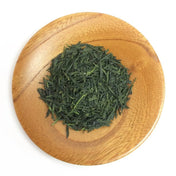Here is a little bit of tea news from the homefront (Japan).
Just last month, from the 22nd to the 25th of August, the 77th National Tea Festival represented by the Fukuoka Executive Committee announced the results of the National Tea Competition. The National Tea Competition, which has been going on since the year 1946, aims to improve tea production techniques and expand tea consumption by bringing together collective efforts of those involved in the tea industry across the country. It also aims to further develop Japanese tea business management.
This year’s festival was held in Yame, Fukuoka Prefecture, one of the major tea producing regions in Southern Japan. It was a special gathering for the city of Yame as this year marks the 600th anniversary of the birth of Yame tea. The last time this event was held in Yame was 18 years ago in 2005. What is more, tea farmer Tsutomu Kurazumi from Yame won the prestigious Minister of Agriculture, Forestry and Fisheries Award (in Japanese: 農林水産大臣賞) in the Gyokuro category and the city swept the Production Area Award (this is no surprise!) in the same category.
The top prize, the Minister of Agriculture, Forestry and Fisheries Award, and the production area award, which is given to municipalities with outstanding results for a specific category of tea, were selected in eight categories. The eight categories for the competition are: regular sencha (10 kg), regular sencha (4 kg), fukamushi sencha, kabusecha, gyokuro, tencha, steamed tamaryokucha, and kamairicha. The fair was the main event of the competition held in Fukuoka Prefecture. This year, in total 832 entries were exhibited from 17 prefectures (Note that there are a total of 47 Prefectures in Japan).
With respect to the categories of tea, you may be wondering why there are two different sencha categories of different weight. This is because the 10 kg sencha category is only for teas that were machine harvested (* with that in mind, senchas from Kagoshima Prefecture do well in this sencha category vs. senchas from Shizuoka Prefecture in the smaller 4 kg category).

How teas are judged
How does the competition work? Founder of Yunomi, Ian Chun has previously written about how teas are evaluated in these National competitions so I will just outline some of the basic steps.
Batches of tea are submitted in 10 kg quantities, except for the 4 kg sencha category. This is competition quality tea! That means that tea farmers will take extra effort and care in cultivating and harvesting this particular batch of tea with the vision to submit for competition(s). All of the submitted teas are then judged based on four criteria: (1) the tea’s external appearance, (2) aroma, (3) liquid color (i.e., the color of the tea after it is steeped), and (4) taste, all adding up to a total score of 200 points. A perfect score is 200 points, and the point distribution will slightly vary depending on the tea type.


Above: table and radar chart depicting the point distribution of 200 points depending on the type of tea. The radar chart was more for visual fun. Because sencha, tamaryokucha and kamairicha all have the same point distributions they are all represented by the same color. In the evaluation, tencha has an additional brewed leaf color aspect.
To judge the tea’s external appearance, the tea is put on a black viewing tray. The shape of the tea leaves are examined. In general, to obtain a high external appearance score, a tea must have superb uniform shape, be clean, and have a glossy finish. The competing teas are displayed next to one another.
Next, the judges will go on to evaluate the three remaining internal characteristics of the tea. To judge the aroma of the tea, the tea (3g will be measured and utilized) will be steeped in a white tea cup so that the color of the steeped tea can be clearly seen. The liquid color of the tea will be judged next. Similar to how the aroma of the tea was judged, tea leaves will be measured and put into a white tea cup. After it has been steeped for 3 minutes (steeping time may vary depending on the tea category), the color of the tea will be evaluated. A clear green color that is not cloudy is considered high quality. Finally, the judges will move onto the final criteria which is the taste (literally translated as, nutriment) of tea. Overall, the taste of the tea receives great emphasis. Again, the tea is steeped in a white cup. This time however, the tea is tasted for evaluation. Judges will have their own personal preferences but in general, a tea is considered to be good if it has abundant umami.
Results from the 77th National Tea Competition in Yame
Now that you have a grasp about how the teas are evaluated, I will report some of the results as most of the detailed information is only available in Japanese.
Gyokuro Category
Perhaps, we will begin with the gyokuro category because this year’s competition was held in Yame. Just to recap, gyokuro refers to premium shade-grown Japanese green tea. The key characteristic of gyokuro is the abundance of rich umami flavor. While sencha is usually grown under the full sun without any shading, gyokuro is shielded from the sun on purpose. On average, the shading period lasts approximately 20 days, but length will vary depending on factors such as region, terroir, and the tea farmer’s style/preference.
Within the gyokuro competition this year, there were 117 entries from 7 Prefectures: Fukuoka, Kyoto, Kagoshima, Shizuoka, Saitama, and Nara. Earlier, I remarked it is no surprise that Yame won the gyokuro category of tea. This is because Yame produces over 50% of all gyokuro on the Japanese tea market. Moreover, their dominance and presence have been reflected in their recent tea competition record. Yame Gyokuro has continuously received the Best Region recognition in the Japanese National Tea Competition. Individually, Yame farmers also seem to have a winning streak in the gyokuro category; yet, every now and then a tea farmer from the Kyoto area will steal away first place.
How were the results this year? When one examines the most highly ranked gyokuro teas (i.e.,35 gyokuro teas with top notch scores), one will see that all but one of the 35 teas are from Yame, Fukuoka Prefecture! The 18th ranked gyokuro went to a tea farmer from Soo City, Kagoshima Prefecture which is the city where Sueyoshi Tea Atelier is located. The dominance of highly rated gyokuros from Yame city re-emphasizes this region’s strengths in gyokuro. I have tried several excellent teas from Yame that are not gyokuros but the tea farmers really do put their effort into making their gyokuro teas the very best.
This year, the highest scoring gyokuro from tea farmer Tsutomu Kurazumi received a perfect score of 200 points. Perhaps it is worth mentioning that within the best gyokuros was the presence of Kurihara Tea’s entry which ranked 17th. Our sincere congratulations go to Kurihara-san! With respect to the dominant cultivar for gyokuro, the majority of the 35 top gyokuros were all Saemidori cultivar, with just three Kirari 31 cultivars (this is a rising star amongst the tea cultivars) and one Saeakari cultivar.
 Akihiro Kurihara’s competition grade gyokuro from this year’s (2023) competition is available at Yunomi.
Akihiro Kurihara’s competition grade gyokuro from this year’s (2023) competition is available at Yunomi.
Sencha Category (10 kg & 4 kg)
In the 10 kg sencha category, there were 104 entries from 7 Prefectures whereas the 4 kg sencha category had 110 entries from 14 Prefectures. At a first glance at the results, it was interesting for me to note that both for the 10 kg and 4 kg categories, the Yabukita cultivar was dominant. This is perhaps no surprise given Yabukita has been the long standard cultivar in Japan.
In the 10 kg sencha category, Minami Kyushu City (represented by the Chiran region), Kagoshima Prefecture won the production area award. In the 4 kg category, Kawanehoncho in Shizuoka Prefecture won the regional recognition. In this category, I would also like to point out that ranked 3rd in the 10 kg category this year was Ken Miyahara from Miyahara Hikari Seicha. Miyahara-san has continuously demonstrated highly ranked teas with a 2nd place sencha last year.
 Ken Miyahara’s National Tea Competition 2022 - 2nd Place Award Winning Yabukita Sencha Micro Batch. Even from the photo, one can clearly see the fine and elegant appearance of the rolled tea leaves.
Ken Miyahara’s National Tea Competition 2022 - 2nd Place Award Winning Yabukita Sencha Micro Batch. Even from the photo, one can clearly see the fine and elegant appearance of the rolled tea leaves.
Fukamushi Sencha
Fukamushi means deep steamed in Japanese and this is exactly how fukamushi sencha differs from sencha. The leaves are steamed for 60 seconds or longer (30 ~ 40 seconds for regular sencha), making the tea leaves very soft and more likely to break apart during the rolling process.
There were 102 entries from five prefectures, including Shizuoka and Kagoshima. In this category, all of the 35 highly ranked fukamushi sencha were from Shizuoka Prefecture. The dominance of Shizuoka Prefecture and specifically, the Makinohara and Kikugawa cities can be better understood through history. The method of steaming tea leaves was invented about 250 years ago (1768) by Nagatani Soen in Kyoto. Yet, deep-steaming tea leaves actually has roots in Shizuoka Prefecture, specifically in the Makinohara Plateau area. I will not go into the details of the history but it is an interesting one for those who are curious. Similar to the regular sencha category, all of the top scoring fukamushi sencha were from the Yabukita cultivar.
Kabusecha
Kabusecha refers to lightly shaded tea. You can think of this tea as the in-between tea of sencha (no shading) and gyokuro (heavily shaded). In this category, 105 entries were submitted from seven prefectures: Fukuoka, Kyoto, Mie, Aichi, Nara, Shizuoka, and Kagoshima. Taking a closer look at the results, the kabusecha category may have been the most diverse category with respect to the highly ranked 32 kabusechas. While many of the top quality kabusechas were from Kyoto Prefecture (especially Maizuru and Ayabe cities), the other kabusechas were from Fukuoka Prefecture (Yame and Chikugo), Kagoshima (Kirishima, Soo City), and Aichi (Toyoda). Additionally, even though there was again a dominance of the Yabukita cultivar, there was more diversity with the presence of other cultivars such as Saemidori and Kirari 31.
Tencha
 The Asahi cultivar was highest ranked in the tencha category . It is characterized by its rich aroma and elegant taste. Scenery from Tsukiji Tea Garden’s shaded tea field, tencha, and matcha.
The Asahi cultivar was highest ranked in the tencha category . It is characterized by its rich aroma and elegant taste. Scenery from Tsukiji Tea Garden’s shaded tea field, tencha, and matcha.
In the National Tea Competition, there is no matcha category. However, tencha, the origin of matcha, is evaluated. Tencha are green tea leaf flakes (depicted in the upper right most panel above). In general, tencha leaves will be shaded for approximately four weeks, steamed, then dried without rolling. The leaves are then even more refined by the removal of leaf stems and veins. Subsequently, the leaves will be chopped into smaller pieces to make the grinding process into powder more consistent.
In the tencha category, there were 111 entries from 7 Prefectures with Kyoto and Aichi Prefectures being the well-known areas for tencha/matcha. Out of the 33 top ranked tenchas, the majority were from Kyoto Prefecture (most of them from Uji) with just a handful from Yame, Fukuoka Prefecture. So Kyoto seems to stand out as the King of tencha! Many of the cultivars used to make the tencha were from the Asahi and Uji Hikari cultivar. There were also some tenchas from the Saemidori, Kirari 31 and Narino cultivars. The 3rd ranked tencha went to world renowned tea farmer Kiyoharu Tsuji from Tsukiji Tea Garden who has won numerous awards across various levels: within Kyoto, West Japan (Kansai) and at the National level.
Steamed Tamaryokucha and Kamairicha
Last but not least, the steamed tamaryokucha and kamairicha categories. Overseas, these tea categories may be less known and may just be lumped with the other Japanese green teas. Yet, for the tea connoisseurs, there is clearly a distinction. Tamaryokucha (a.k.a. guricha or curly tea) tea leaves have a unique and rounded shape owing to the skipping of the last rolling process. This results in the curly appearance of tea leaves rather than straight like a regular sencha. Tamaryokucha is generally steamed (although it can be pan-fried) whereas kamairicha refers solely to pan-fried tea.
Back to the results from the tea fair! The Yabukita cultivar again demonstrated its robustness as it was used for many of the top performing teas. What differs in these categories is that the historically strong production areas are in Kyushu, the Southernmost island of Japan.
In the steamed tamaryokucha category, there were 101 entries simply from four southern prefectures: Saga, Nagasaki, Kumamoto, and Miyazaki. In the kamairicha category there were 82 entries from 3 prefectures: Saga, Kumamoto and MIyazaki. The top production award for both of these teas went to Ureshino, Saga Prefecture, a major tea producing region we have previously touched on. Receiving double recognition across the two tea types was very exciting news for Ureshino city. Moreover, the tea farmers receiving the highest recognition of these teas - i.e., receiving the Minister of Agriculture, Forestry and Fisheries Award also went to tea farmers from Ureshino City. Woo hoo!
Wrap Up
Today’s blogpost highlights strengths of specific tea production areas. It also gives perspective with respect to the overall dominance of certain tea cultivars in Japan, particularly within a category of tea. I hope that this blogpost may have helped you to better understand all of the different types of Japanese teas.
I am a tea drinker who finds comfort and grounding in having a regular sencha or kamairicha as an everyday tea so I do not mingle much with gyokuros or kabusechas. Writing up this report however, did make me want to drink a gyokuro, with plentiful umami, especially from Yame! There is always good tea to look forward to… Speaking of future events, an award ceremony for the 77th National Tea Competition will be held in Yame City on October 28th. More recently, a bidding and sales event for the exhibited teas was just held in Chikugo City, Yame Prefecture on September 21st.
Related articles:
- 50 Major Tea Production Areas in Japan
- How are teas evaluated at Japan’s tea competitions?
- Does the Best Gyokuro come from Yame?


